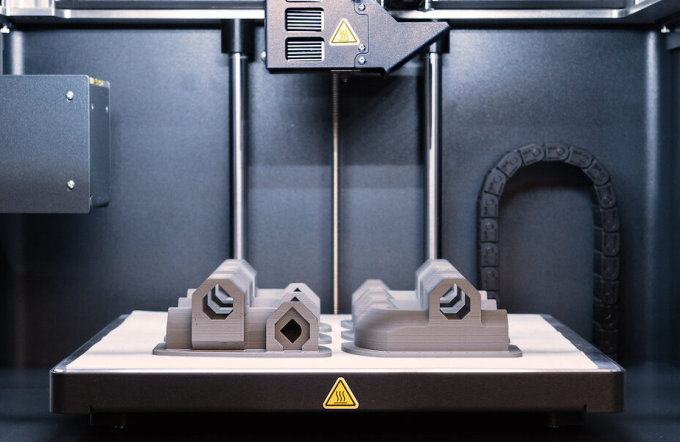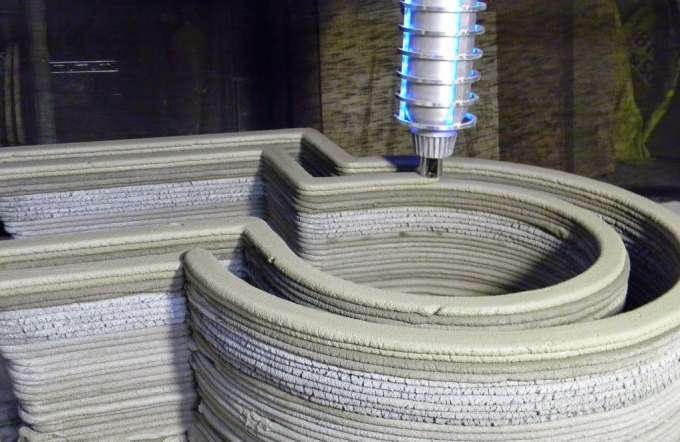Selective Laser Sintering (SLS) 3d Printing In Australia
Selective laser sintering 3d Printing is very good for producing prototypes which require strength. It consists of functional plastic part which contains mechanical properties and used in prototyping or low volume production.
Selective Laser Sintering (SLS) is a 3D printing technology used to combine tiny particles of plastic powder (nylon and carbon fibre) with laser technology to produce a solid object. We offers the best SLS 3D printing service that has become the most chosen printing technology amongst the industries dealing in consumer goods, factory tools, aerospace components, and more.
We’ll create your 3D printed parts accurately according to your original object and deliver within the time we committed. Let us serve you!

Benefits of SLS :
The process has some of the most significant benefits for those who seek to create simulations and prototyping 3D printing designs or want their designs to have low volume and the elimination of tools that consume much of the time. The technique can also create some of the structures with thin walls and have detailed geometrics on an intricate level. Here are some of the prime benefits of using the technique,

Complements well with many materials
The technique complements well with many materials that even include ceramics, metals and glass powder. This expands its applicability and makes it a preference in many industries.
Reduces production cost
This 3D printing technique is an ideal choice for producing items in smaller batches that also tend to reduce the overall production cost while also allowing a great degree of customization.
Self-supportive technique
The method does not require any support structure to help in creating a specific design. Therefore, the technique remains self-supportive overall. When Nylon based materials are used in the method, then it is the finest and fastest technique for 3D printing in the room. This is because Nylon takes the least time in melting upon exposure to sintering laser.
Strong material bonding
The adhesion power in the layers is extremely strong. There is a high level of bonding in the materials after the melting and layer addition. Also, the printed items have mechanical properties that are virtually isotropic. This property provides the final designs same level of strength and durability at all points.
The Process of SLS
A thin layer of powered material is coated over the build platform which is pre heated below the melting point of the polymer material used. High power laser is used to fuse powdered particles in order to build a solid part layer by layer. The laser fuses the material together by scanning the entire cross section from the 3D model. After this process, build platform lowers and the object surface is re coated repeating this process until the part is complete.


Benefits of SLS 3D Printing
MJF vs SLS
MJF stands for Multi Jet Fusion, yet another 3D printing technique based upon heat. However, there are subtle differences between the MJF and the SLS method. The primary difference is the basis of heat concepts that the two use. On the first hand, SLS uses lasers to transmit heat and slinter the cross-section of the base material. At the same time, MJF deploys a specialised ink that is a fusing agent to be spread on the powder that enables transmission of heat through the absorption of infrared light. The other differences between the two methods are,
- SLS primarily works with the concept of layering the materials repeatedly one over the other. At the same time, MJF relies on heating the printing and fusing material up to the sintering temperature and working with a detailing agent simultaneously.
- The printed parts using the MJF process are usually black or near black in colour as this colour allows the maximum absorption of infrared light. On the other side, the parts printed using SLS are white in colour and can be blended in well with other colours because of their porous nature.
Features of the SLS
Some of the prime features of the SLS printing technique include,
- Parameters: The manufacturers pre-set the printing parameters associated with SLS machines for 3D SLS printing This is why it does not require any support structure to help with the designing and printing process.
- Adhesion: The method relies on the layering of materials at its very centre. This simultaneous layering of the same material strengthens the bond between the particles to another level and gives extra durability to the finally produced part.
- Shrinking: The parts produced using this technique are subjected to shrinking as a part of the cooling of materials. The printed items develop internal stress as the cooling process progresses. This causes the layers to pull upwards from the bottom.


Materials:
- Polyamide 12 (PA 12): Prepared from polyamide powder, this material (plastic) is known for having good mechanical properties, including stiffness and high chemical resistance. This material offers high accuracy and lower cost. This is typically used for fast prototyping and producing finished products.
- Polyamide 11 (PA 11): This material is known for its high elasticity and displays isotropic behavior.
- Aluminium filled nylon (Alumide): This material is a mixture fine aluminium particles and polyamide powder and is recommended for metallic appearance. This material is highly stiff and has a shiny look with a matte surface.
- Glass filled nylon (PA-GF): This material is a mixture of polyamide powder and glass fibers with a white slight porous surface. This material is commonly used for complex designs (typically used in the automotive industry) due to its high stiffness. It has high temperature resistance when combined with good chemical resistance.
- Carbon fiber filed nylon (PA-FR): This material displays high weight strength ration and excellent stiffness.
Get affordable and effective SLS 3D printing services in Sydney, Perth, Brisbane, and Melbourne from us.
Industries we serve with SLS

(Nylon) SLS Printing Methods
| Material Name | Quality | Min Details | Minimum Wall Thickness | Maximum Size |
| Nylon PA2200 (White) | Smooth Surface | 0.3mm | 0.7mm | 675x545x366 |
| Nylon PA11/12 | Smooth surface | 0.2mm | 0.6mm | 380x380x284 |
| Glass-filled nylon 3200 | Smooth surface | 0.5mm | 1.0mm | 380x380x284mm |
| Alumide (SLS) | Smooth surface | 0.5mm | 0.8mm | 315x240x190 |
| Multi Jet Fusion PA12 (Black) | Smooth surface | 0.2mm | 0.7mm | 380x380x284 |
| HP Premium Nylon PA12 (SLS) | Smooth Finish | 0.2mm | 0.8mm | 380x380x284mm |
| Material Name | Properties | Application |
| Nylon PA2200 (White) | Tensile Strength- 48 Mpa Temperature- 172 – 180 °C/td> | Used for fully functional parts, snap-fit assemblies and moving parts, complex and intricate geometries, automotive, medical, packaging industries. |
| Nylon PA11/12 | Tensile Strength- 48 Mpa Temperature- 46 – 180 °C | Used for functional prototypes and series parts such as hinges. and also used for automotive interior components for crash relevant parts. |
| Flexible TPU 86A | Tensile Strength- 7 Mpa Temperature- 138 °C | Used for caster wheels, automotive instrument panels, sporting goods, power tools, medical devices, footwear, drive belts, inflatable rafts. |
| Glass-filled nylon 3200 | Tensile Strength- 51 Mpa Melting point- 176 °C | Used for products which requires good strength and stiffness. |
| Nylon PA12 Glassfilled | Tensile Strength- 12 – 140 Mpa Melting point- 90 – 182 °C | Used for functional prototypes as well as end-use parts for demanding applications such as aerospace and automotive. |
| Alumide | Tensile Strength- 42 – 48 Mpa Melting point- 172 – 180 °C | Used to manufacture complex shapes, stiff parts, automotive parts and for the parts which require a metallic appearance. |
| Multi Jet Fusion PA12 | Tensile Strength- 48 Mpa Temperature- 95 -175 °C | Used for mechanical purposes such as prototypes or finished products like geared systems. |
| HP Premium Nylon PA12 | Tensile Strength- 48 Mpa Temperature- 95 -178 °C | Used for temperature resistance dies, patterns and fixtures for food production, surgical guides, aerospace components, housing components. |



















